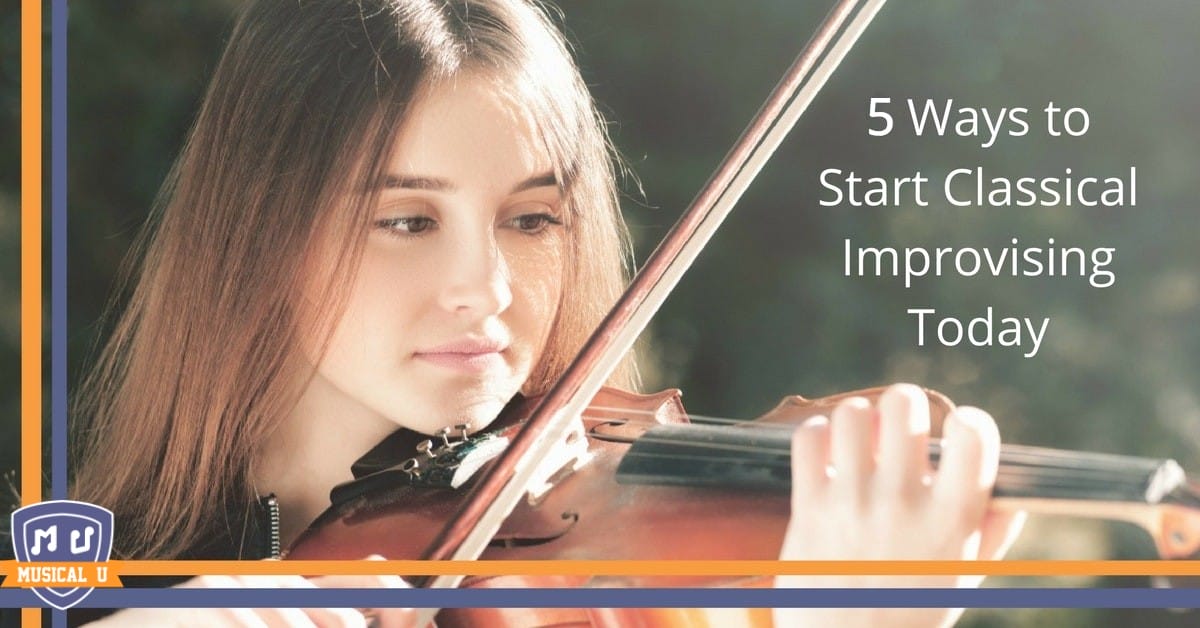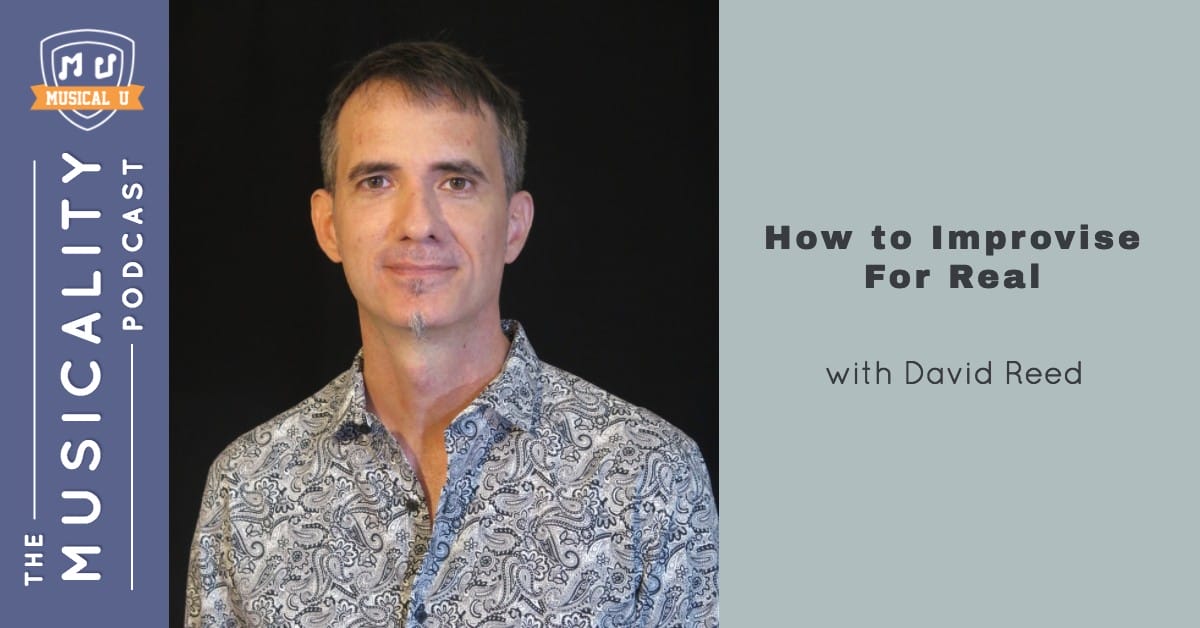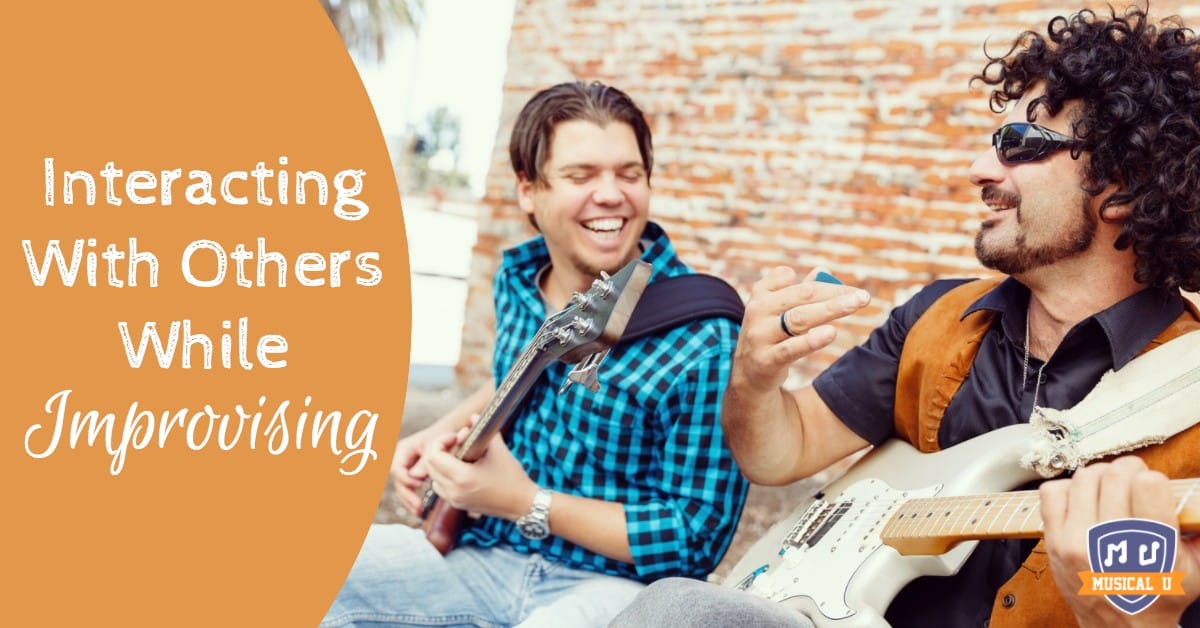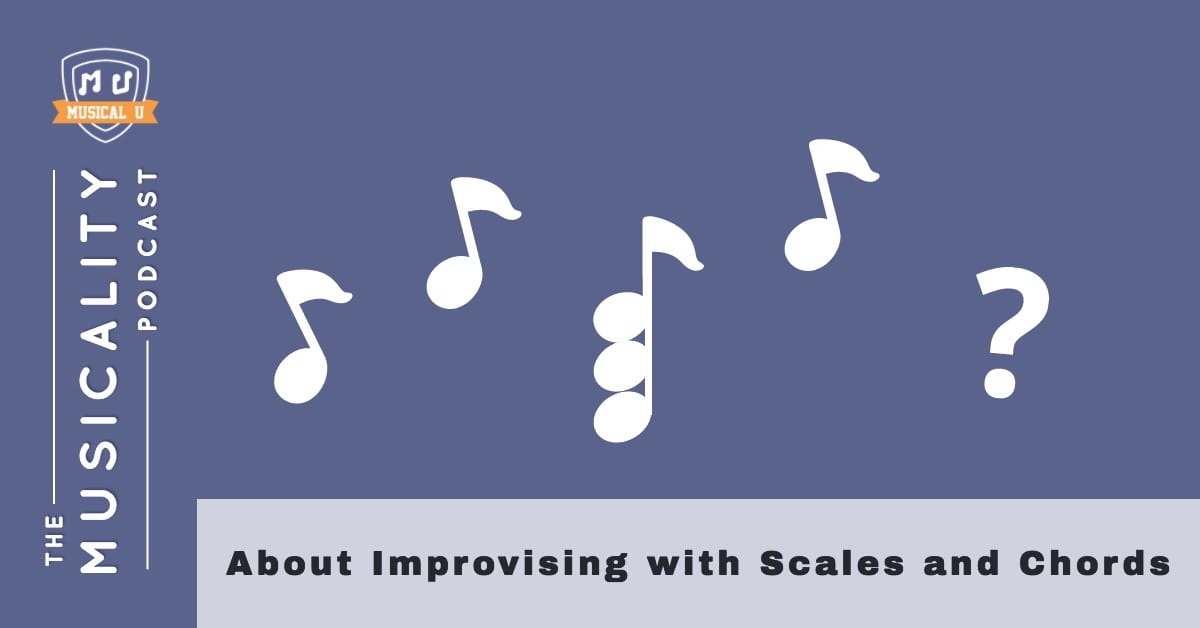This week in Improv Month, we continue to dive into improvisation by exploring some new ways of playing spontaneously.
We look at the surprisingly close relationship between improvisation and classical music, interview the creator of popular improv resource Improvise for Real, explore the art of improvising in a musical group setting, and introduce you to a tool that will take your improv beyond the realm of scales.
Classical Improv
Many musicians are under the impression that classical music does not lend itself well to improvisation, and believe that strict, by-the-book renditions are the only way to play this genre.
In reality, classical music has a history tied to improvisation – Mozart himself would sometimes produce compositions on the spot!
 5 Ways to Start Classical Improvising Today is your springboard for diving into classical improv. Here, you’ll find tips on approaching classical improv from many different angles and starting points, and how to engage your listeners along the way.
5 Ways to Start Classical Improvising Today is your springboard for diving into classical improv. Here, you’ll find tips on approaching classical improv from many different angles and starting points, and how to engage your listeners along the way.
Prior to the 20th century, improvisation was more common in classical music – famous composers were well known for being able to improvise compositions on the spot. So how did improv become more associated with jazz and popular music? The Strad examines this topic and brings recommendations for how to bring improvisation back to the classic cadenza.
While jazz “borrowed” improvisation from classical music, there are plenty of musicians that are trying to bring it back! Meet Gabriela Montero, a classically trained pianist who is on a personal mission to bring the lost art of improv back to our great concert halls.
Improvisation knows no boundaries – it can be practiced in any form of music, on any musical instrument. Christian Howes has recently released a series of 45 improvisations for unaccompanied violin that may change your perception of what makes good improv.
Improvising the Right Way
If improv is meant to be spontaneous, creative, and free-flowing, why do so many approaches to learning improvisation ultimately limit musicians?
This week, we interview David Reed, creator of Improvise for Real, an online resource that integrates ear training, creativity, music theory, and technique to teach musicians to improvise freely.
 In this jam-packed interview, David shares his musical beginnings, the moments that changed his mindset about learning music, and how improv entered into his musical world. He discusses how improv is traditionally approached, the limitations of this method, and how the logic behind Improvise for Real fills in those gaps and makes way for musicians to fully immerse themselves in improv – and be rewarded.
In this jam-packed interview, David shares his musical beginnings, the moments that changed his mindset about learning music, and how improv entered into his musical world. He discusses how improv is traditionally approached, the limitations of this method, and how the logic behind Improvise for Real fills in those gaps and makes way for musicians to fully immerse themselves in improv – and be rewarded.
David speaks about improvisation with such a passion that we wanted to share more of the great material he is creating at his website, Improvise for Real. Don’t miss his guide for getting started in musical improvisation!
Many musicians struggle during their initial foray into improvisation, especially if they play an instrument that is not commonly charged with melodic lines like the bass guitar. Dawsons has developed four simple steps to learn bass improvisation that will help you find your path to improv freedom.
David spoke fondly about playing from a Real Book during his early gigging days. While phrases like “Real Books” and “Fake Books” are quite common in the jazz lexicon, they are not commonly used outside of their world. To get a glimpse into some of the latest Real Books, Jazz Times has this review of some new offerings from Hal Leonard.
Along the way, David decided that he needed to take some time away from music. Little did he know that by taking a step back, he was able to find a passion that hadn’t existed previously. Bharat from Euphonic Space recently completed his own journey to rediscovering his muse. And did it through a most unconventional way… by writing about music.
Interactive Improv
It’s one thing to think up licks and riffs on your own, but what happens when you need to improvise with others?
Improvisation takes on a new meaning when playing in a group – it goes from a musical monologue to a conversation. And in order for that conversation to flow, players need to take musical and physical cues from one another.
 In Interacting With Others While Improvising, we explore some devices and cues you can use during jam sessions to stay on the same page, and what can be done to communicate before you even pick up your instrument.
In Interacting With Others While Improvising, we explore some devices and cues you can use during jam sessions to stay on the same page, and what can be done to communicate before you even pick up your instrument.
Being able to communicate is something a musician must be able to do while they are in the midst of performing. Worship Online has written this guide for what a Worship Band Leader should be doing during a performance. No matter what style of music you play, there is something in here for all musicians.
While we talked about how musicians communicate with one another, should a performer also learn ways to communicate with the audience? This is an art unto itself and separates world class performers from the rest. For some insights into this subject, check out Paul the Trombonist’s interview with master orchestrator Duane Benjamin.
We can’t talk about communication between musicians without mentioning the call-and-response, a staple of good blues soloing! To hear two guitarists demonstrate this classic improvisation technique, watch Danny Page’s call-and-response jam on Guitar Jamming Tracks.
Improv with Scales and Chords
Scales are a favourite of many improvisers. They involve simple patterns with seemingly infinite permutations, they’re easy to play, and they usually sound quite good.
The problems start when musicians rely solely on scales for their improvisation.
 Upgrade your improvisation toolkit with About Improvising with Scales and Chords, where we connect scales to chord tones and to the broader concept of harmony – the secret behind giving your improvisation some punch and lending it that “storytelling” quality.
Upgrade your improvisation toolkit with About Improvising with Scales and Chords, where we connect scales to chord tones and to the broader concept of harmony – the secret behind giving your improvisation some punch and lending it that “storytelling” quality.
For many musicians, just the thought of having to improvise their own musical compositions can cause a bit of anxiety. We all get pretty comfortable staying on the page. But even for the musician that primarily plays written music, learning to improvise can greatly benefit your overall musicality. Connolly Music has tips for building your improvisation skills without ever having to step out on open mic night.
We talked about how learning scales and licks is an important part of improvisation, but you need to take it another step further to become comfortable with this art. Good improv, much like good composition, tells a story. Coming up with a story in your melody will help you to connect with your audience, and DIME gives some playgrounds that you can use to do so.
Have you ever heard a fantastic musician improvise and wonder what was going through their mind? Improvisation requires using both the creative and analytical sides of the brain, and mDecks Music has recorded this wildly entertaining video to show what that looks like. Enjoy this exploration of the improviser’s mindset!
New Ways of Improvising
Improvising certainly involves coming up with melodies on the fly, but as this week’s content shows, it’s so much more than that.
Musicality in improvisation means being able to effectively communicate with fellow musicians well enough to play spontaneously in a group. It means going beyond mere scales to incorporate harmony. And for you classical musicians out there, it means going beyond the sheet music to inject a personal touch into your favourite Bach piece.
What other new ways of improvising will you discover? Stay tuned for the rest of Improv Month to learn even more tools for spontaneous playing!
The post Classical Improv, Improvising the Right Way, Interactive Improv, and Improv with Scales and Chords appeared first on Musical U.